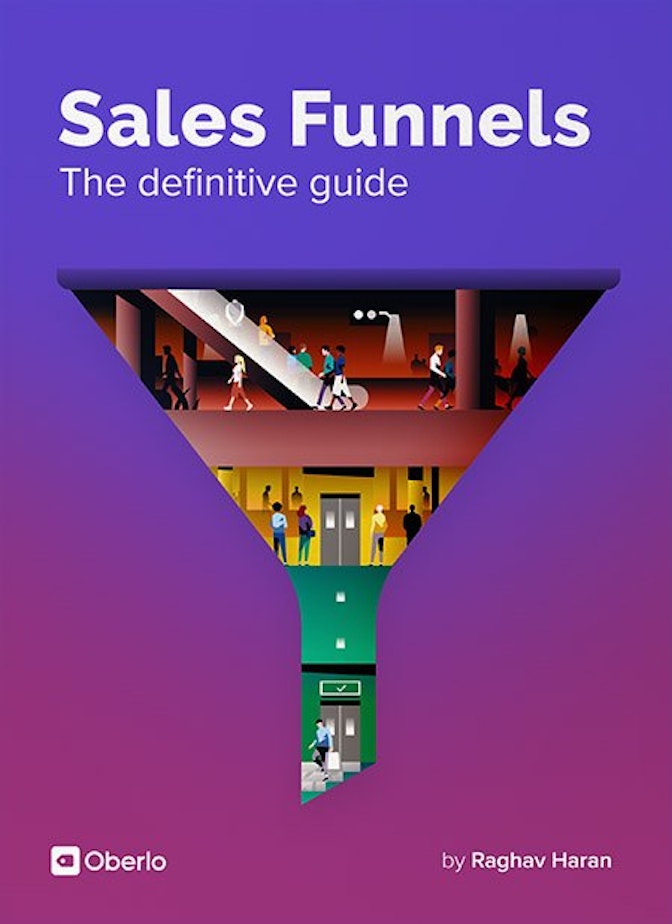In the previous chapters, we talked about building the right customer journey and crafting a marketing funnel to go along with it. In this chapter, we’re going to talk about funnel hacking, a quick way to build that marketing funnel by using other funnels have already been proven to work.
Funnel hacking is the process of digging into your competitors’ marketing funnels, and using versions of those funnels to sell your own products.
It’s one of the quickest, simplest ways to get your business started without having to build an entire marketing funnel from scratch. By using customer journey flows that your competitors have already built, you can get a head start in getting your online business off the ground. And then go back and tweak the funnel later once you’ve got your initial sales.
You can look at your competitors’ sales pages, landing pages, price points, emails, retargeting ads, and more to reverse engineer their sales process. Later in this chapter, we’ll talk more about Facebook advertising examples that you can funnel hack.
Here are a few things that’ll help you get started funnel hacking:



3.1 A Step-By-Step Guide to Funnel Hacking
Step 1: List out a few competitors to investigate
The first step is to make a list of competitors that sell products similar to yours. A good source for this is your Facebook news feed. Chances are that you fall into your competitors’ Facebook advertising demographic, too.
Your competitors could be both your direct competitors, and also indirect competitors who still occupy the market but might not be selling the exact type of products you’re looking to sell.
→ Click Here to Launch Your Online Business with Shopify
Step 2: Go through their funnel
As mentioned in the previous chapter, a funnel is simply a step-by-step process that businesses use to take customers from ‘awareness’ to ‘purchase.’
But you won’t be able to see your competitor’s entire funnel mapped out in the same way we mapped out the customer journey in Chapter 1.
That’s why you should go through as much of their funnel as you can, and screenshot everything.
Screenshot their website. Screenshot their opt-in copy. Screenshot their email funnel.
The goal is to get a clear picture of the marketing tactics your competitors are using to sell to customers, end-to-end. To do this, you can use the screenshotting tool on your computer, and save the screenshots into folders that are clearly labeled.

For example, in the screenshot above, I’ve created folders within ‘competitor funnel’ that will hold the ad copy, website opt-in copy, front end landing pages, and more. This way, you can get a clear picture of how your competitor is selling to their audience, step-by-step.
Funnels can get pretty complicated with various steps, but at a high level, the main types of content you’ll want to pay attention to are:
- Front end landing pages. These are the landing pages that you’d come across when you first click on the ad.
- Back end landing pages. These are the landing pages that are used for upsells, cross sells, downsells, etc. Usually they’re presented after the initial offer.
- Ad copy and creative. Make a note of what kind of ad copy and creative they’re using to get customers from the news feed to the landing page in the first place.
- Email follow up series. Not all competitors will have an email follow up series on the back end, but if they do, be sure to capture what their autoresponder sequence looks like.
- Website opt-in copy. It’s not as important to focus on website copy, and many competitors will be running ads anyway, But also take a note of the copy they’re using to drive people to the call to action on their site (whether it’s to collect emails, drive them to a consultation call, etc).
Step 3: Make a note of sales triggers
The entire point of funnel hacking is to leverage same flow and messaging that your competitors are using to attract customers.
So as you’re going through their funnel, make a note of tactics you see them using.
Here are a few examples:
- Common messaging, phrases, or words used in the marketing copy
- How they frame headlines and subject lines
- What kind of social proof they have (i.e. videos, written, etc)
- Whether they present a webinar, eBook, video, or something else on their front end landing page.
- How many steps the funnel takes to complete
- Whether they have an email follow up sequence or not
- Product price points
- Landing page/sales page length
In the beginning, it will be difficult to see who’s doing it ‘right’ and who’s doing it ‘wrong’. Not all competitors you study will be using a strategy that you’d want to emulate.
But as you go through multiple different funnels in the same industry, you’ll be able to spot trends, and get a feel for what the ‘standards’ in the industry are when it comes to marketing content.
3.2 Funnel Hacking Tools
When it comes to building profitable funnels, you have to drive traffic to a page and convert that traffic.
The ‘customer journey’ is one way of building a process around converting that traffic, but the journey can be taken across just a handful of pages.
In this section, we’ll talk about how to uncover the tools your competitors are using to help them drive and convert more traffic.
Ghostery
One of the most effective Chrome extensions to do this is called Ghostery. Ghostery helps you uncover what kind of pixels and trackers are placed on web pages – for example, you’ll be able to see if a site has a Facebook pixel on it (i.e. whether or not they’re running Facebook ads).
The app is designed to let users stay ‘hidden’ from these trackers and pixels, but it’s also an effective way of seeing which trackers are being used on the site in the first place.
BuiltWith Technology Profiler
BuiltWith Technology Profiler is another Chrome extension that lets you see what technology the website you’re visiting is built with.
It’s a ‘site profiler’ tool that sends you information on all the technologies it finds on a given web page – including programming languages, advertising pixels, analytics, and more. You’ll see if a site is using Google Analytics, WordPress, AdSense for monetization, and more.
AdBeat
AtBeat is a more advanced tool that uncovers the strategies advertisers are using in your industry. You can see things like how many days they’ve been spending money on a campaign, the landing pages they’re using to collect emails and sell products, and more.
AdBeat lets you see what’s working for other successful companies in your niche, and will help you get a better sense of how you can apply their results to your own online business.
SEMrush
SEMrush is an SEO tool that marketers use to uncover insights about competitors. Through the tool, you can search how much organic traffic your competitors are getting, what they’re ranking for in search, and more.
SEMrush also estimates how much they’re spending on paid advertising, where they’re getting backlinks from, etc.
SimilarWeb
SimilarWeb is another advanced marketing insights tool that you can use to get a sense for what your competitors are doing. The tool allows you to see top referring sites, destination sites, and more.
3.3 How to Use Funnel Hacking to Growth Hack Your Business
When you go through your competitors’ funnels, a crucial step is actually the various products they have in their funnels.
While this might be expensive, it’s super important.
The reality is, competitors will have different sequences on the back end of their funnel, depending on what products you buy. By purchasing all their products, you can see exactly what’s going on behind closed doors. Take a note of their offers, upsells, downsells, cross sells, etc.
Ultimately, the product (or the ‘offer’) is the most important part of the marketing mix. And the sequencing of those products and the price points are what allow your competitors to run ads the way they do.
With the data you get from the tools above and insight into what happens on the back end of their funnel, you’ll be well equipped to replicate their funnel for your own product.
In this section, we’ll take you through the process of funnel hacking a campaign. We’ll also show you some examples of how companies growth hacked their business by running specific types of ads.
Hacking Front End Landing Pages
The ‘front end’ of a funnel refers to the initial offer that you’re presented with. Depending on the industry, some companies will present you with a ‘low ticket’ item first (i.e. a relatively cheap product) before presenting you with more expensive products on the back end.
To hack the front end of a funnel, you’ll want to screenshot and take note of the initial landing page you’re directed to when clicking on a customer’s ad,
Be sure to capture examples related to how they write copy in the ads, how they write sales letters, custom graphics/images, and any tracking codes.
Once you have your list of competitors, you can navigate over to their Facebook page, click ‘Info and Ads’ on the left hand bar, and scroll through the ads they’re currently running. For example, if you’re starting an e-commerce business, you can learn from funnel hacking a product like Organifi:
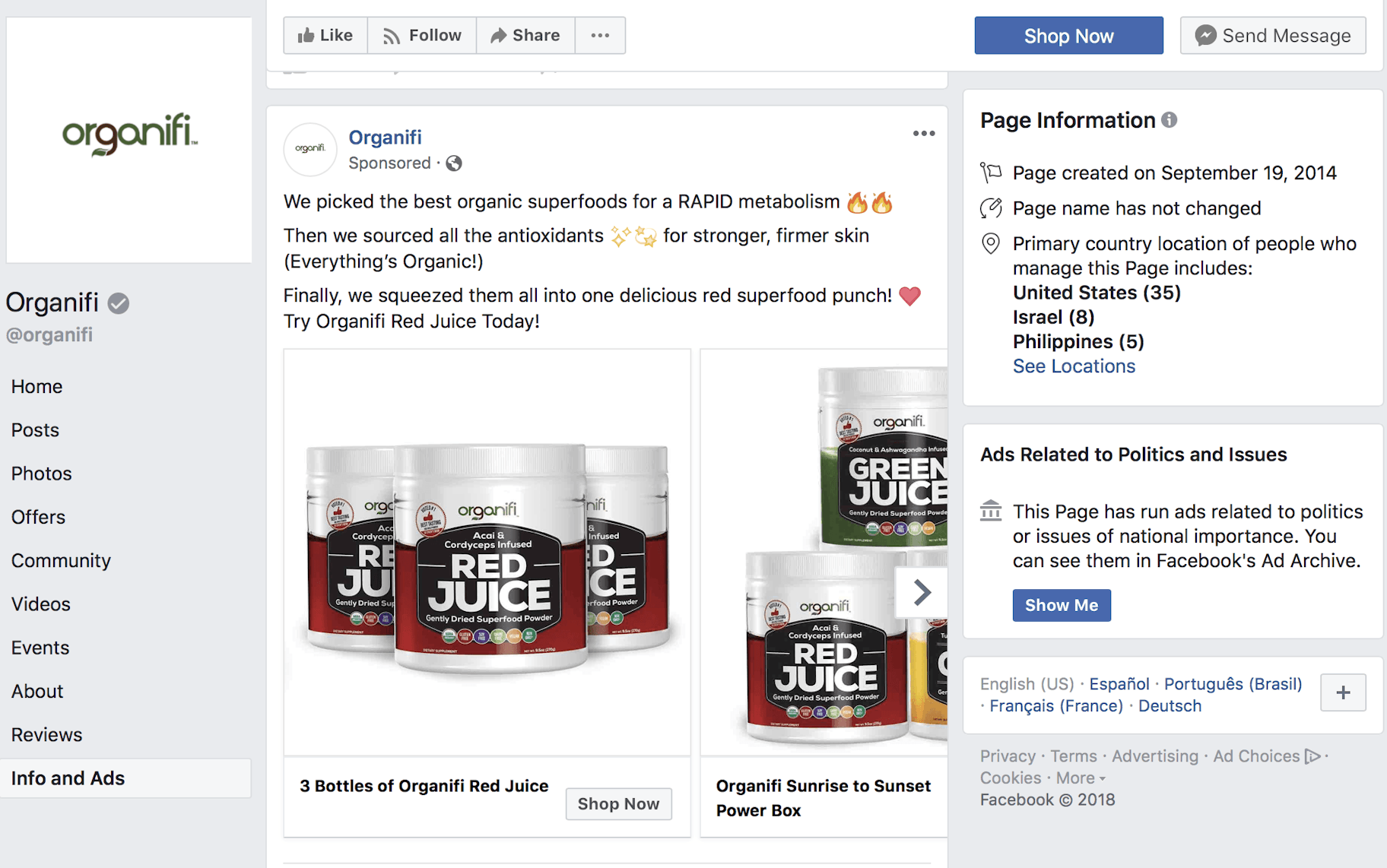
You can click through on the ads as well to see what landing page they direct to:
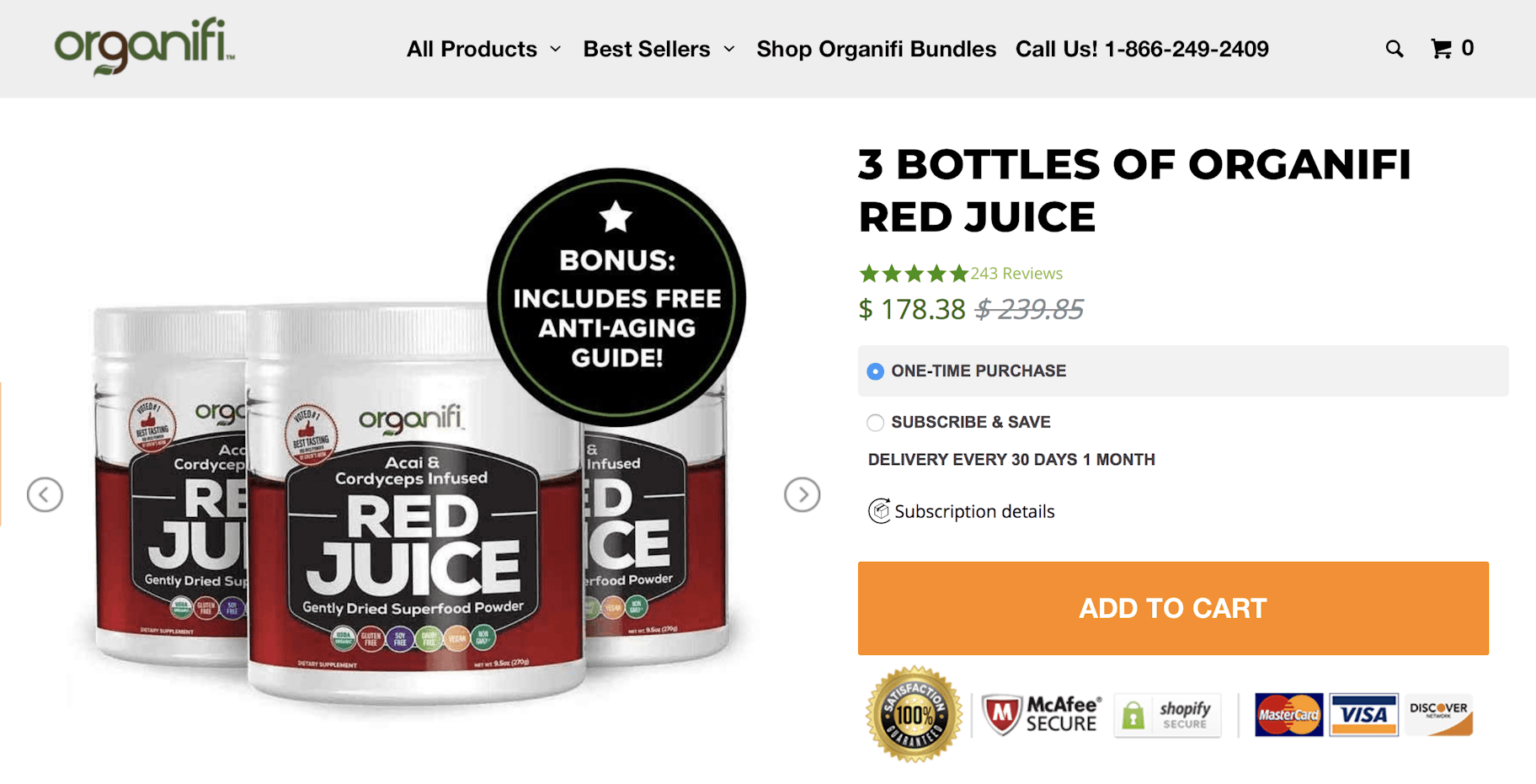
Another example of a successful funnel is MentorBox (run by Alex Mehr), an online video series that features interviews with bestselling authors and other experts. If you’re selling a video series, course, or subscription product, this would be a good funnel to dig into:

Take note of the headlines, videos, and CTAs on their landing page:
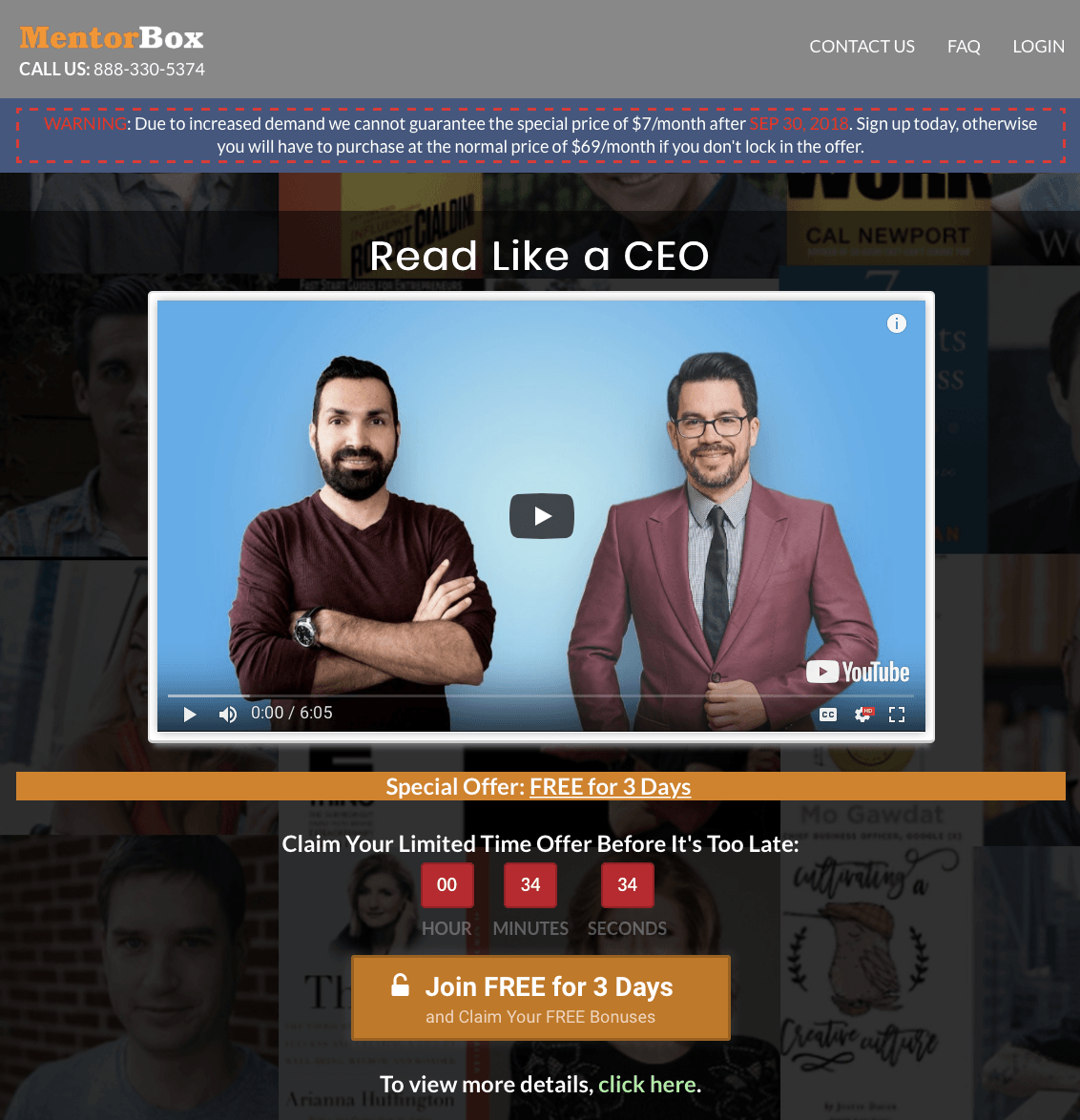
Funnel Hacking Front-End Offers
The offer is the most important part of any marketing funnel.
Once you get a feel for the front end landing page, start looking at what they’re actually offering. Is it s subscription product? Is it an expensive physical product? Is it a cheap product? What kind of price point are they hitting?
For example, MentorBox initially presents visitors with a $7-per-month subscription, but positions it as a ‘Free for 3 days’ trial:
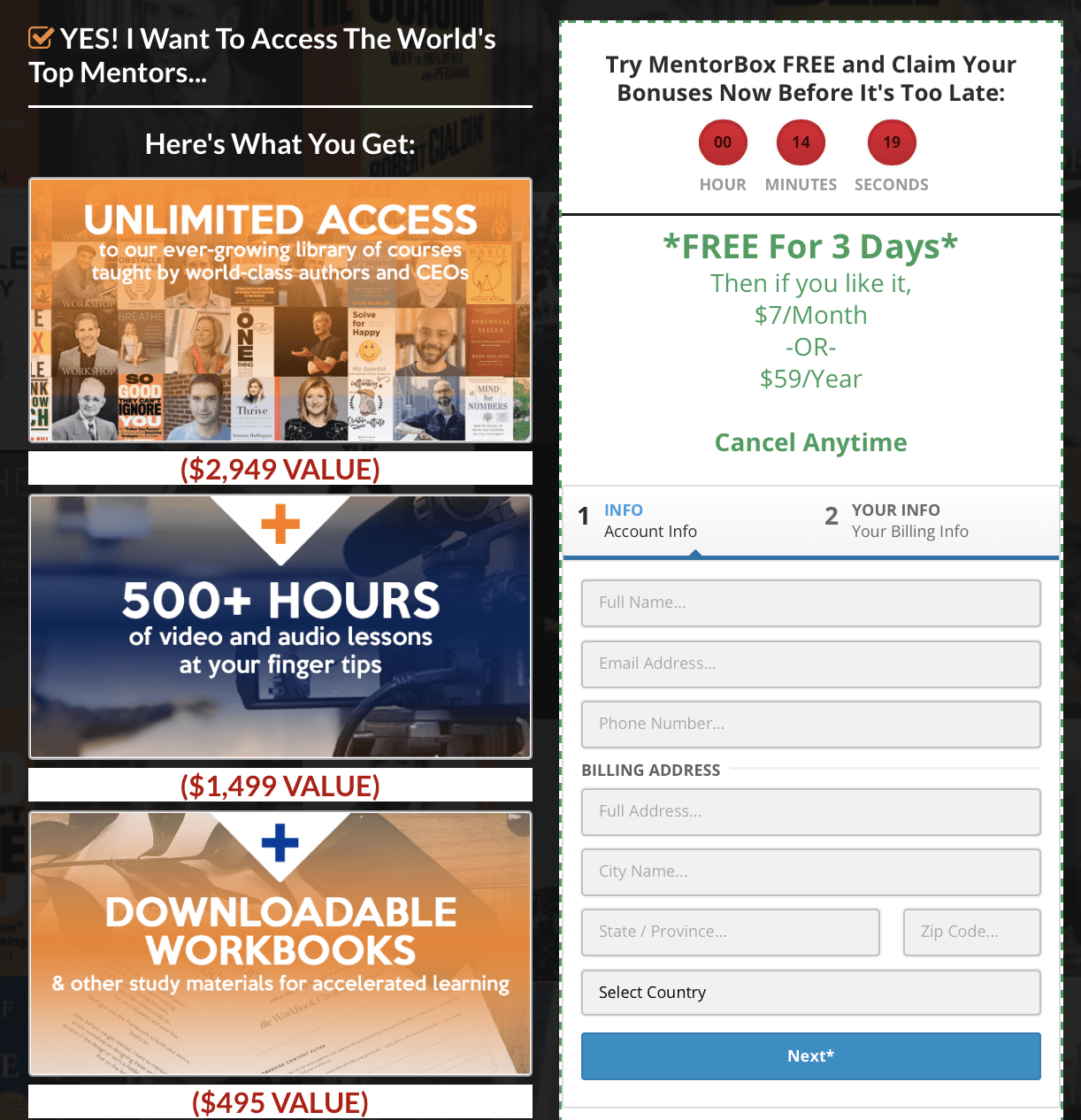
These subtleties are important because they show you the ‘angles’ you can use to sell your own products.
Funnel hacking the back end
This is the most crucial, but also the most difficult part of the funnel hacking process.
The back end of any funnel is where the majority of profits are generated. It’s also where businesses ‘ascend’ their customers to higher level, higher ticket offers.
But the back end is also more complicated than the front end, and it’s more difficult to analyze what’s going on.
For example, if you join the initial $7 per month subscription for mentorbox, you’ll get this offer to join Entrepreneur’s Academy:

If you decline the offer (by scrolling down to the bottom of the page and click ‘no thank you’), you’ll get presented with another offer to join a $99 product:

If you decline this offer, you’ll get the option to purchase a monthly physical box membership from MentorBox:

And so on.
There are usually two main ‘purchase flows’ in a funnel – one set for people who buy each upsell, and one for people who decline to buy.
Going through the entire process will help you get a sense for the products and your competitors are selling to maximize lifetime value.
Funnel hacking retargeting ads
Many times, marketers will target you with ads once you visit their website.
If you see these ads in your news feed, make a note of them. Screenshot them, and screenshot the landing page that you get directed to after clicking on it.
And most importantly, take note of when you see the retargeting ad. Was it after you joined their email list? After you visited a certain page on their website?
Retargeting ads typically are used to get visitors to complete an action that they initiated but didn’t finish. This might mean completing a checkout order, buying a product from a sales page, etc.
Funnel hacking email sequences
One way to uncover which competitor really knows what they’re doing is by seeing which ones send you follow-up emails after you sign up.
Smart marketers always have an email follow-up system in place to take you on the ‘journey’ of buying more products from them down the road. Keep a note of the emails that you receive, and the products that they push through email.
You’ll be able to put together your own email sequence based on the emails you receive from your competitors.



Chapter 3 Takeaways
- Funnel hacking is the process of digging into your competitors’ marketing funnels and using versions of those funnels to sell your own products.
- First, list out some competitors to investigate, go through their funnel, and make a note of the ‘sales triggers’ they use. Take a look at some Facebook advertising examples and retargeting ads, and consider applying their strategies to your business.
- You can use certain software tools and Chrome extensions to get insight into what competitors are doing.
Through funnel hacking, you can get a head start in getting your online business off the ground. Plus, you can go back and tweak the funnel once you’ve figured out what works.

